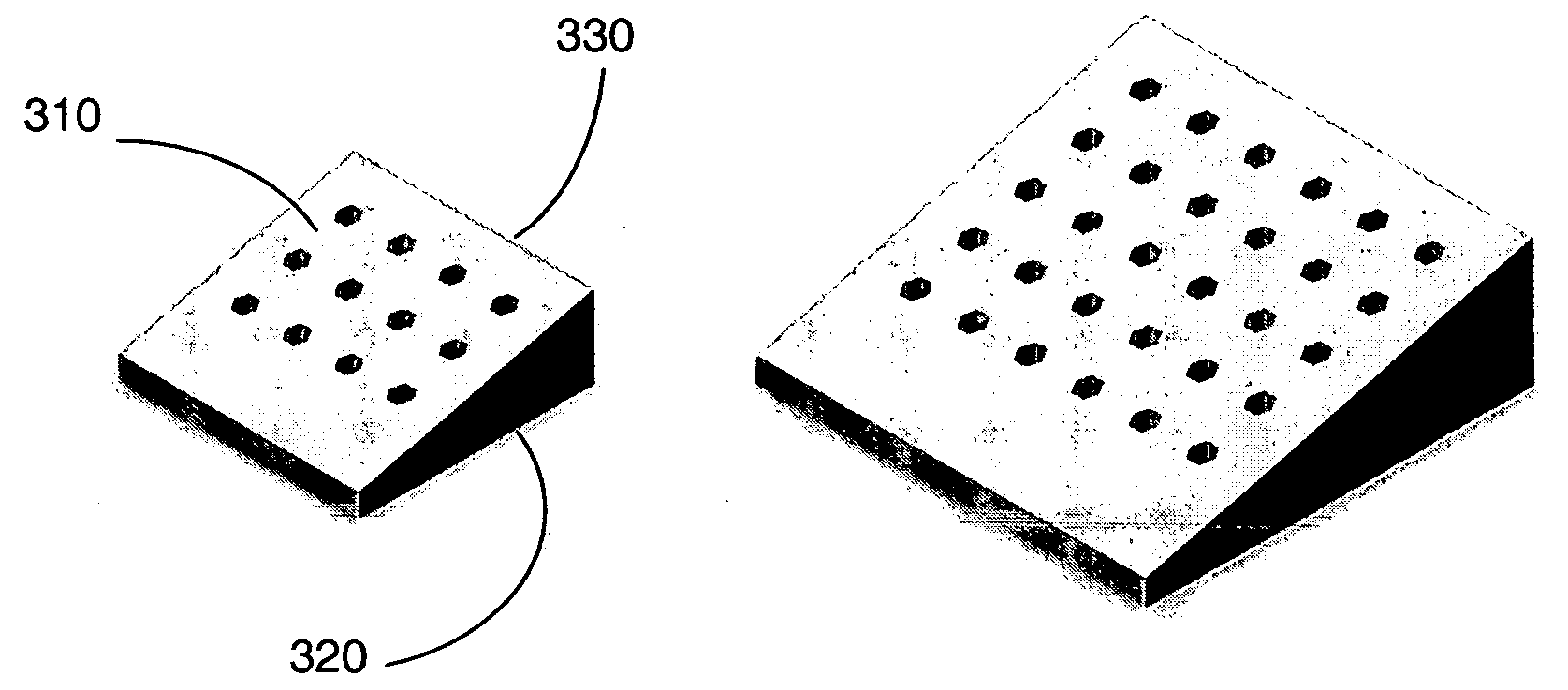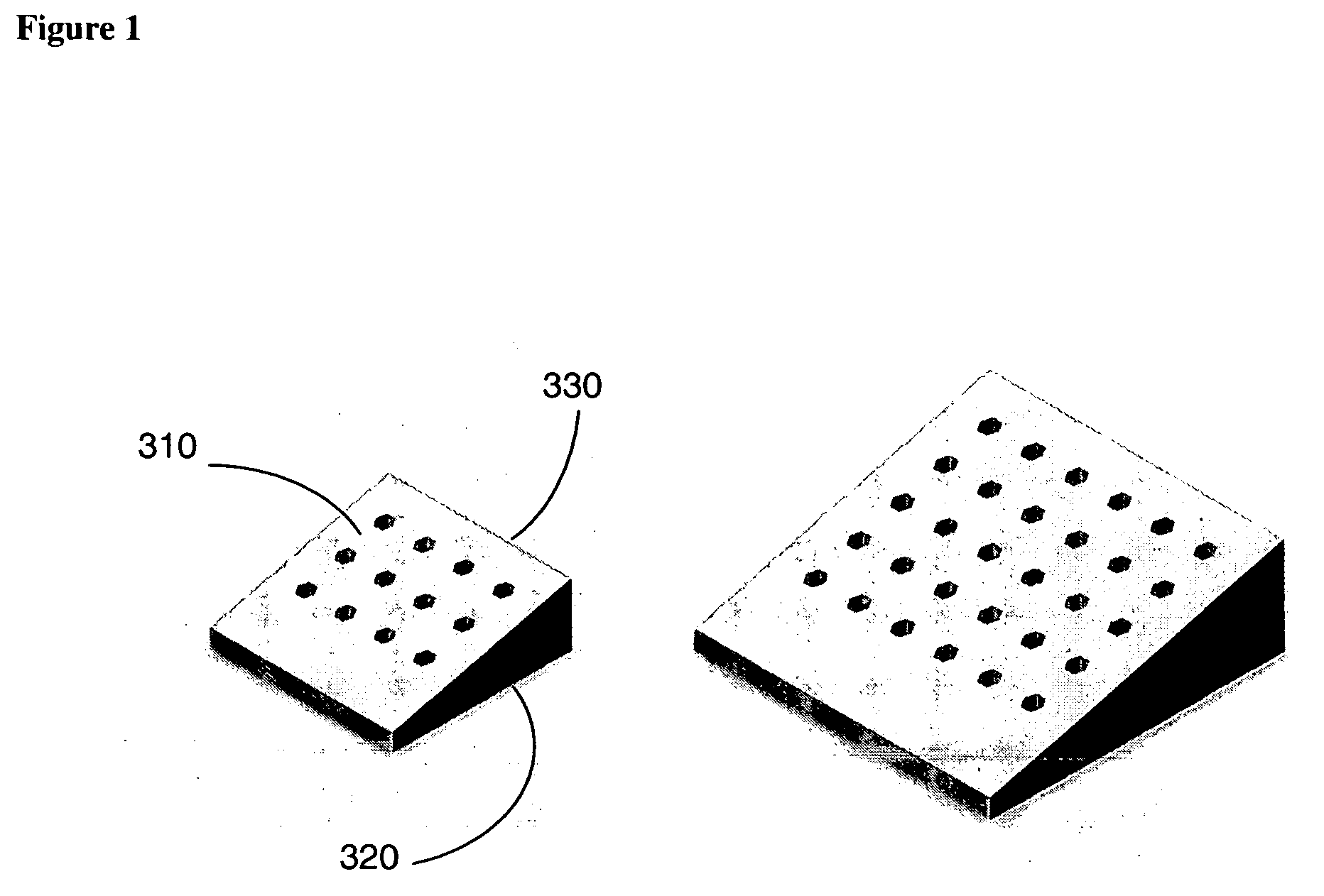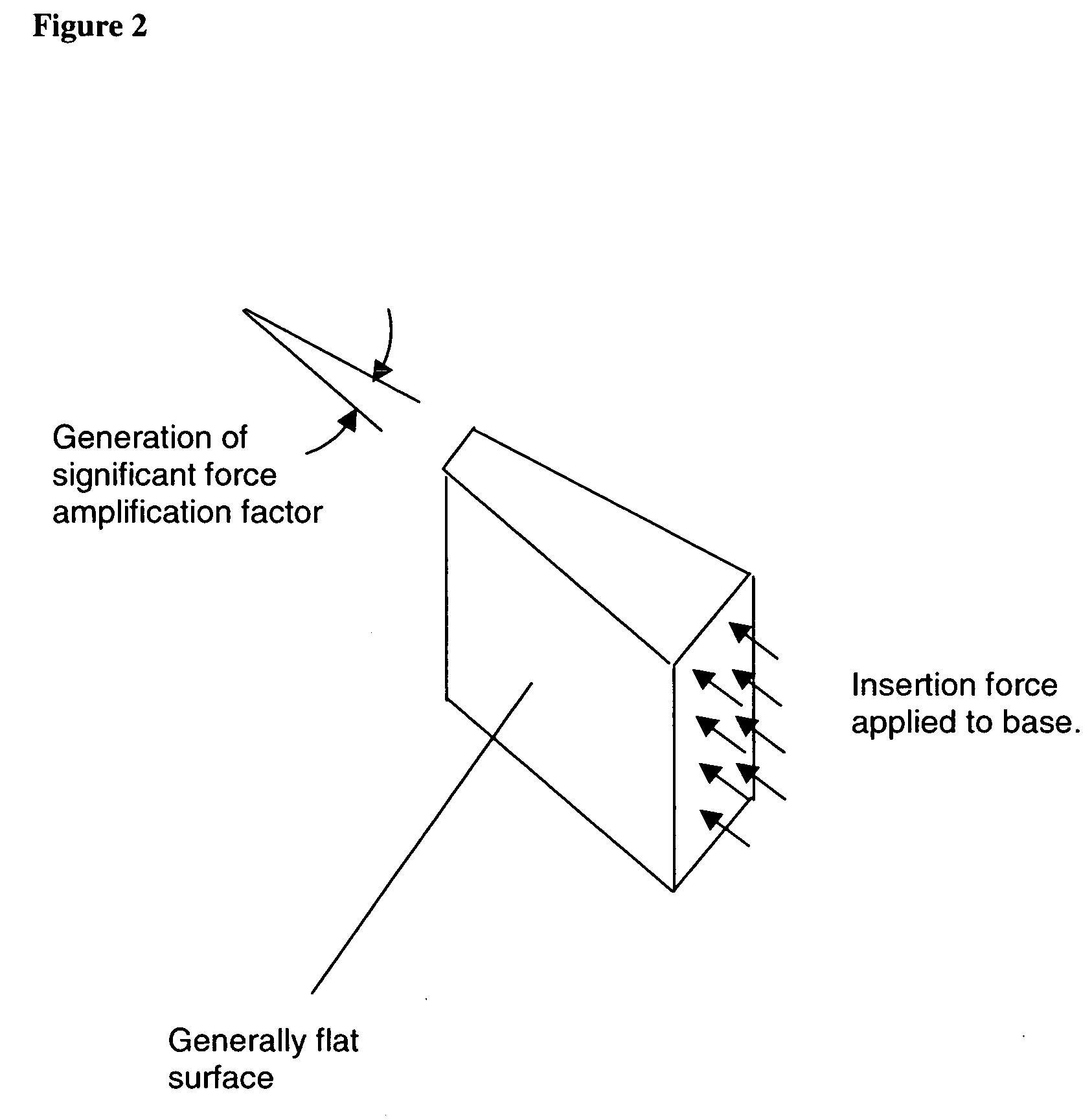Shaped filler for implantation into a bone void and methods of manufacture and use thereof
a technology of shaped fillers and bone voids, which is applied in the direction of joint implants, manufacturing tools, prostheses, etc., can solve the problems of bone bleeding, acute, idiopathic or chronic pain to the patient, and both putty-like materials and loose granular materials have the potential to migrate after surgery
- Summary
- Abstract
- Description
- Claims
- Application Information
AI Technical Summary
Problems solved by technology
Method used
Image
Examples
Embodiment Construction
[0023] The invention includes bone void filler pieces of shapes suitable for implantation in a bone void that was surgically created, or otherwise resulting from other conditions such as disease or traumatic injury. The filler pieces may be suitable for use in a void in the crest of the ileum, which may be used as a bone donor site.
[0024] In one embodiment of the invention, the shape of the filler piece may be a shape that is substantially a wedge or a truncated wedge. The wedge or truncated wedge may be defined by a first generally flat surface and a second generally flat surface that is angled with respect to the first generally flat surface. The two surfaces may be angled with respect to each other by an angle of about 15 degrees of less, or more generally, an angle of less than about 30 degrees. The filler piece may also comprise a base surface connecting the two generally flat surfaces at the larger end of the filler piece. FIG. 1 shows the shape of the filler piece as being p...
PUM
| Property | Measurement | Unit |
|---|---|---|
| angle | aaaaa | aaaaa |
| pore size | aaaaa | aaaaa |
| pore size distribution | aaaaa | aaaaa |
Abstract
Description
Claims
Application Information
 Login to View More
Login to View More - R&D
- Intellectual Property
- Life Sciences
- Materials
- Tech Scout
- Unparalleled Data Quality
- Higher Quality Content
- 60% Fewer Hallucinations
Browse by: Latest US Patents, China's latest patents, Technical Efficacy Thesaurus, Application Domain, Technology Topic, Popular Technical Reports.
© 2025 PatSnap. All rights reserved.Legal|Privacy policy|Modern Slavery Act Transparency Statement|Sitemap|About US| Contact US: help@patsnap.com



